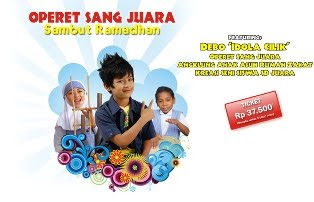My Indonesia
Indonesia, the largest archipelago and the fifth most populous nation in the world, has a total of 17,508 islands, of which about 6,000 are inhabited. Indonesia extends 3,198 miles (5,150km) between the Australian and Asian continental mainland and divides the Pacific and Indian Oceans at the Equator. With a total land area of 767,777 square miles (1,919,443 sq. km), its 190 million inhabitants are made up of 300 ethnic groups who speak an estimated 583 different languages and dialects. There are five main islands in Indonesia. These are: Java, Sumatra, Kalimantan, Sulawesi and Irian Jaya.
Across its many islands, Indonesia consists of distinct ethnic, linguistic, and religious groups. The Javanese are the largest and most politically dominant ethnic group. Indonesia has developed a shared identity defined by a national language, ethnic diversity, religious pluralism within a majority Muslim population, and a history of colonialism and rebellion against it. Indonesia's national motto, "Bhinneka Tunggal Ika" ("Unity in Diversity" literally, "many, yet one"), articulates the diversity that shapes the country. However, sectarian tensions and separatism have led to violent confrontations that have undermined political and economic stability. Despite its large population and densely populated regions, Indonesia has vast areas of wilderness that support the world's second highest level of biodiversity. The country is richly endowed with natural resources, yet poverty is a defining feature of contemporary Indonesia.
Across its many islands, Indonesia consists of distinct ethnic, linguistic, and religious groups. The Javanese are the largest and most politically dominant ethnic group. Indonesia has developed a shared identity defined by a national language, ethnic diversity, religious pluralism within a majority Muslim population, and a history of colonialism and rebellion against it. Indonesia's national motto, "Bhinneka Tunggal Ika" ("Unity in Diversity" literally, "many, yet one"), articulates the diversity that shapes the country. However, sectarian tensions and separatism have led to violent confrontations that have undermined political and economic stability. Despite its large population and densely populated regions, Indonesia has vast areas of wilderness that support the world's second highest level of biodiversity. The country is richly endowed with natural resources, yet poverty is a defining feature of contemporary Indonesia.
Sunday, August 23, 2009
Batik Nusantara Exhibition
 Venue: Jakarta Convention Center
Venue: Jakarta Convention Center
Date: Wed, 08/26/2009 - Sun, 08/30/2009
Batik Nusantara Exhibition will feature various batik products from many parts of the country. Batik designers and producers from batik centers in the country will offer their new products and collections at the exhibition.
About Batik :
Indonesian Batik is a form of creative works of art, expressed in the patterns of cloth for clothing, sarongs, jarig and other decorative fabric made with the practice "night" and canting batik. The early introduction of batik in Indonesia through a process of cultural migrants China and India, and with the indigenous population. In line with the growth of social values and culture of Indonesia, batik works of art growing and develop into a national property high values.
The using of batik is closely with related event, the symbol of social status and culture makes batik handicrafts grow into a high valuable economic resource , encouraging the growth of various design and use of new raw materials, and even was able to contribute in the export of nonmigas.
Batik contain elements of art, this craft is doing by woman since long time ago using a simple canting and a natural dye from plants. Industrial activity grew rapidly, and batik mass produced through a process using the cap pembatikan, the coloring influence of developed countries, without leaving the high value of the east and still appear on the processing and show gentleness of the skilled work.
Challenges faced by the need to preserve and increase the more value . There is concern that batik are taken by other foreign countries, the necessary steps taken protection, recognition and awards in the country of origin itself. For years since 1994 that was initiated by Mrs. Ginandjar Kartasasmita, Mr. Ir. Firdaus Ali and Mr. DR. Dipo Alam formed a foundation which is named Batik Indonesia Foundation. It was established on 28 October 1994 and followed by Youth Oath spirit.
sources : tourismindonesia.com, gelarbatiknusantara.co.id
Labels: Serba Serbi
0 Comments:
Subscribe to:
Post Comments (Atom)





,+Jakarta.jpg)




Post a Comment